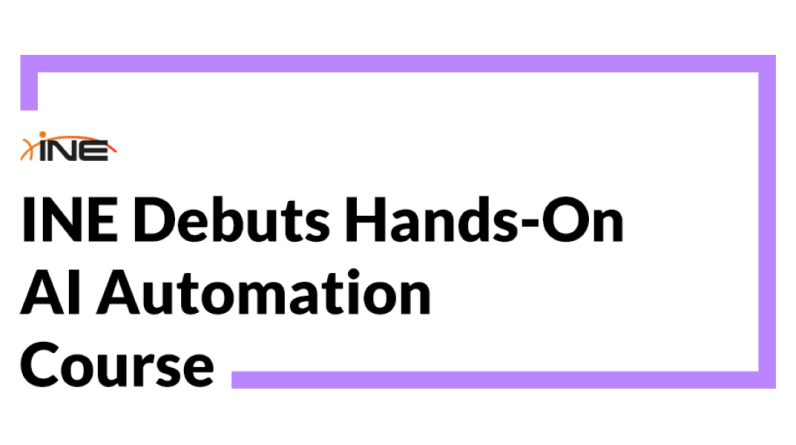
Just as the Force is wielded by Jedi Knights in the Star Wars universe, AI is the technology organisations can use to conquer inefficiency and revolutionise processes across industries. From streamlining operations to enhancing decision-making, the potential of AI-driven automation is vast.
However, as organisations negotiate this transformative journey, they will need to overcome challenges in digital transformation to ensure peak efficiency and sustainable growth.
Challenge 1: How to maximise the power of data
At the heart of AI-driven automation lies data – a fuel of immense power that requires careful management. You could think of AI as the chef, and data as the ingredients: with finer ingredients, you get a better dish. Data-driven businesses enable leaders to make informed decisions and adjust swiftly as needed. According to Gartner’s Data Quality Market Survey, poor data management costs businesses an average of £12 million each year – and 60 per cent of them fail to assess the financial impact of having inaccurate data.
As businesses embrace the potential of large language models (LLMs), they must acknowledge the increased challenges of data usage and outcome explanations. A PwC study reveals that 61 per cent of business leaders struggle to explain AI decisions, underscoring the need for transparency. The interpretability and explainability limitations of LLMs can also make their predictions harder to understand, reducing trustworthiness.
This is why more organisations are turning to narrower language models which are designed to comprehend, interpret and act on complex data with high precision and efficiency. These models enhance transparency, enabling business leaders to clearly explain how clients’ data is used, mitigating the risk of non-compliance with emerging regulations such as the EU’s AI Act, and reducing bias – a prevalent concern in automated decision-making systems.
Organisations possess a wealth of data accumulated over years of operation, including information related to customers, products, logistics, supply chain, finance and compliance. By harnessing this data, they can train AI algorithms to understand patterns, predict outcomes, and automate repetitive tasks effectively. However, the quality, authenticity and consistency of the data are paramount. Without solid data foundations, the promise of automation remains unfulfilled.
Challenge 2: Know how the workforce will transform in the age of AI and automation
As AI and automation evolve, they are reshaping traditional industries, leading to significant implications for the workforce. Imagine having all those tedious, repetitive tasks taken away – what would you do with all that extra time? Maybe finally start that hobby you’ve been putting off? Intelligent automation can augment human capabilities, enabling employees to focus on tasks that require creativity, critical thinking and emotional intelligence. However, it also raises concerns about job displacement and the need for upskilling and reskilling initiatives.
Together, we can harness the power of AI to transform our workplaces, making them more efficient and enjoyable for everyone. Organisations must adopt a human-centric approach to automation, prioritising workforce development and fostering collaboration between employees and technology. Business leaders should educate employees on the benefits of AI tools, emphasising that they are intended to relieve them of repetitive tasks, ultimately enhancing job satisfaction.
TechRadar reveals that 87 per cent of workers believe AI positively impacts their jobs, and 81 per cent prefer a combination of AI and human collaboration to solve problems. AI can also improve the overall employee experience, leading to higher retention rates. Moreover, integrating intelligent automation into decision-making processes must be approached with caution. The synergy between human-in-the-loop and automated systems highlights the importance of maintaining a human touch in technology-driven environments.
Challenge 3: How to select the right automation tool
Choosing the right automation tool is like picking the perfect weapon in a video game – each has its strengths, and you don’t want to be stuck with a rubber chicken when you need a lightsaber. And that starts with understanding the business process’s purpose. On one hand, a variety of AI solutions, predictive analytics and machine learning tools are available to streamline processes, eliminate bottlenecks, optimise operations and provide exceptional customer service – all of which can be furnished by process intelligence (PI).
On the other hand, for example, if the accounts payable process focuses on invoicing, the finance team will want to ensure invoices have high straight-through processing rates and low errors to expedite payments. The integration of AI, facilitated by optical character recognition (OCR) technologies, is revolutionising data organisation from physical documents. Intelligent document processing (IDP) tools leverage AI to significantly enhance accuracy and speed throughout processes. This enhancement translates to improved straight-through processing, cost savings and elevated quality standards.
IDP is a game-changer for functions that are reliant on handling large volumes of documents, such as accounts payable, transportation, logistics and customer onboarding. Purpose-built AI solutions, such as IDP, streamline deployment, ensure efficient processing and enable swift extraction of crucial insights from structured and unstructured documents.
Companies aiming to fortify their AI and automation strategies should mitigate risks and expenses by embracing purpose-built AI solutions customised to their unique business processes and document requirements. These specialised AI tools, such as IDP, can continuously be trained to understand and read diverse document types just like a human, improving operational efficiency and cost savings.
As AI continues to evolve, leveraging robust data foundations will be essential for unlocking the true potential of intelligent automation. By embracing purpose-built AI, organisations can position themselves at the forefront of the digital revolution. AI-driven automation will empower their workforce, mitigate risks and achieve sustainable growth in an increasingly competitive landscape.
To learn more about how AI in automation can transform your business sign up to register for this year’s Intelligent Automation Month sessions taking place during September today at www.abbyy.com/intelligent-automation-month
By Maxime Vermeir, Senior Director of AI Strategy, ABBYY







